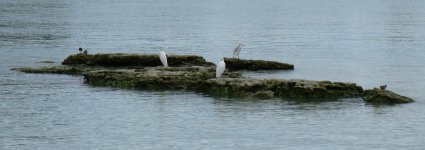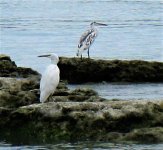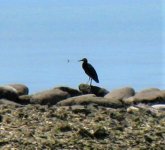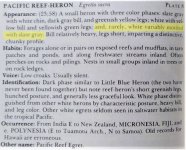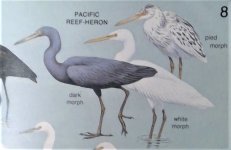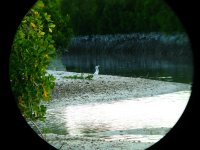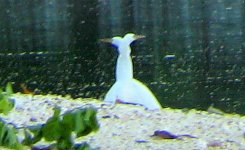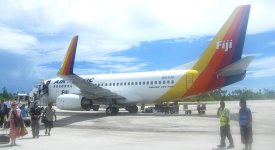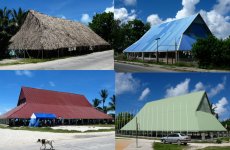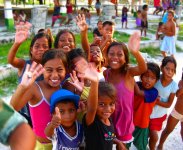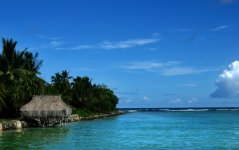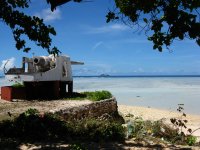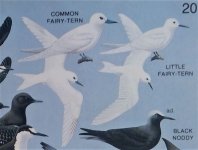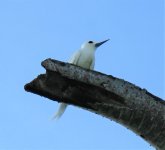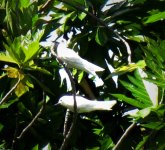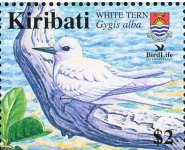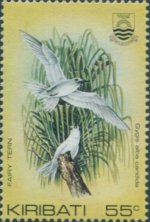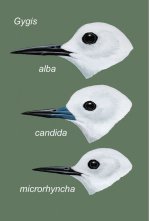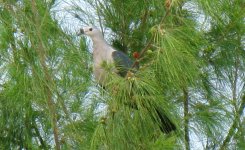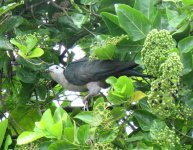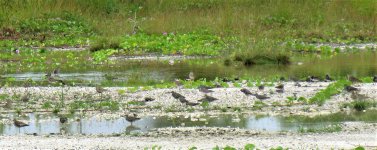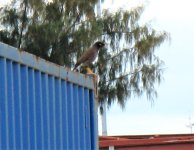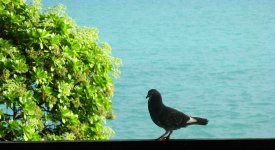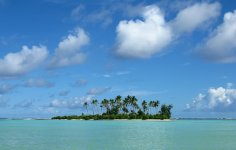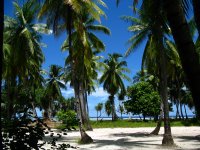Joe H
Well-known member

I’ve recently found the time to get back into bird watching and one of the (pleasant) tasks I’ve given myself is to sort through old computer image files and checklists to clean up my life list. I also want to share some pictures of birds that might not be all that commonly seen or easily reached. I’m hoping to provide something back to this web site as I have gained a lot of value from the wealth of information generously shared here.
For about five years (2009 -2014) I travelled for work to a handful of South Pacific Island locations, one of which was Tarawa Atoll. Well-known from its brutal WW2 era battle about 80years ago; it’s now part of the Republic of Kiribati, which encompasses the Line, Phoenix and Gilbert Island groups.
One picture I wanted to highlight contains the Pied Morph of the Pacific Reef Heron. According to “A Field Guide to the Birds of Hawaii and the Tropical Pacific,” (Princeton University Press, by Pratt, Bruner and Berrett) the Pied Morph is rare compared to the Dark and White Morphs. I have a picture below which shows a couple of White Morph birds along with a Pied Morph. I was surprised to see very few pictures of the Pied Morph on the internet so I thought I’d post the picture here. If I recall correctly, the White was by far the most common morph seen on Tarawa, followed by the Dark and Pied morphs. While least often seen, I would not say the Pied morph was rare on Tarawa when I was visiting there. I probably saw it daily, but only one or two. The Whites were pretty much seen anywhere. I’ll also post a close-up of the Pied bird, a rather poor picture of a dark morph bird, and the field guide details regarding the Pied Morph. I’ve seen the Reef Heron all over the Pacific, but Tarawa was probably the only place I regularly saw all three morphs.
Thanks for reading! In my next post I’ll describe a charming mating ritual involving these birds.
For about five years (2009 -2014) I travelled for work to a handful of South Pacific Island locations, one of which was Tarawa Atoll. Well-known from its brutal WW2 era battle about 80years ago; it’s now part of the Republic of Kiribati, which encompasses the Line, Phoenix and Gilbert Island groups.
One picture I wanted to highlight contains the Pied Morph of the Pacific Reef Heron. According to “A Field Guide to the Birds of Hawaii and the Tropical Pacific,” (Princeton University Press, by Pratt, Bruner and Berrett) the Pied Morph is rare compared to the Dark and White Morphs. I have a picture below which shows a couple of White Morph birds along with a Pied Morph. I was surprised to see very few pictures of the Pied Morph on the internet so I thought I’d post the picture here. If I recall correctly, the White was by far the most common morph seen on Tarawa, followed by the Dark and Pied morphs. While least often seen, I would not say the Pied morph was rare on Tarawa when I was visiting there. I probably saw it daily, but only one or two. The Whites were pretty much seen anywhere. I’ll also post a close-up of the Pied bird, a rather poor picture of a dark morph bird, and the field guide details regarding the Pied Morph. I’ve seen the Reef Heron all over the Pacific, but Tarawa was probably the only place I regularly saw all three morphs.
Thanks for reading! In my next post I’ll describe a charming mating ritual involving these birds.
Attachments
Last edited:




